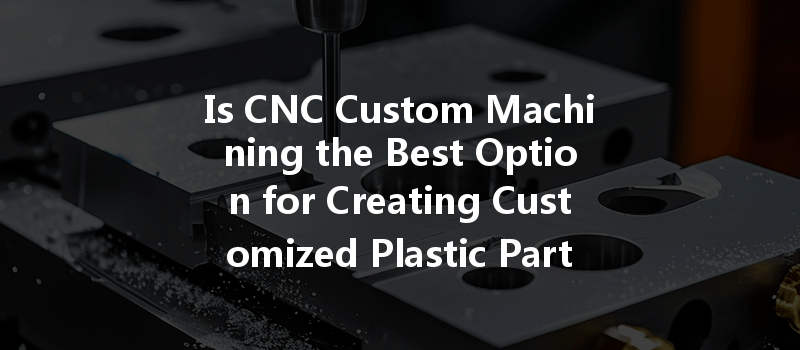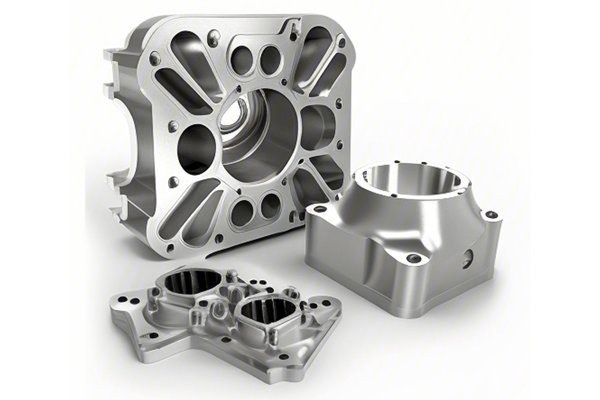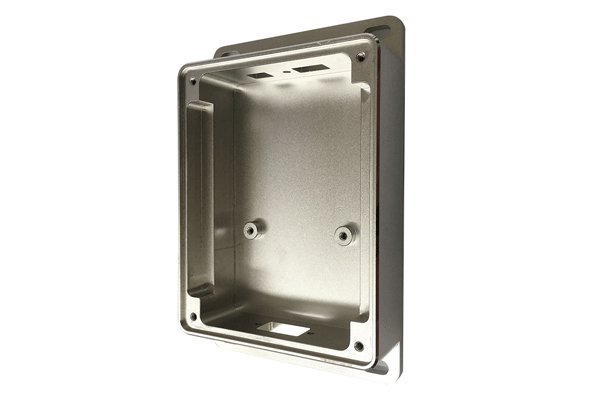At first glance, the world of manufacturing can seem overwhelmingly complex with its myriad techniques and technologies. However, when it comes to efficiency and precision in producing customized components, CNC (Computer Numerical Control) machining often takes center stage. Did you know that CNC machining can increase production efficiency by up to 50% compared to traditional machining methods? This remarkable efficiency is largely due to the way CNC machines automate manufacturing processes, making it a viable option for creating tailored plastic parts. But is CNC custom machining the best method for fabricating these components? This blog will explore the ins and outs of CNC machining and why it might just be the ideal solution for your custom plastic part needs.
Understanding CNC Machining
CNC machining is a manufacturing process that utilizes computer-controlled tools to produce parts with a high degree of accuracy. This method can handle various materials, including metals, wood, and, importantly, plastics. The process begins with a digital 3D model of the part, which is then translated by the CNC machine into precise movements of the cutting tools.
CNC machining offers several advantages compared to traditional manufacturing methods, especially when it comes to creating customized plastic parts:
The Process of CNC Machining Customized Plastic Parts
To understand if CNC machining is the best option for customized plastic parts, let’s delve into the process. Here’s a step-by-step overview:
Step 1: Design and Prototyping
The journey begins with creating a detailed digital design using CAD (Computer-Aided Design) software. Designers can simulate how the part will look and function, allowing for adjustments to be made before any physical manufacturing begins. Prototyping can also be done using CNC machining to generate a model for testing.
Step 2: Material Selection
Choosing the right type of plastic is crucial. Factors like strength, flexibility, temperature resistance, and cost must be considered. Common choices include:
Step 3: Machining Setup
Once the design is finalized and the material is selected, the CNC machine is set up. This involves:
Step 4: Machining Execution
The CNC machine begins cutting, milling, or drilling the plastic material based on the programmed specifications. The tool moves with precision, adhering to the design and ensuring that the final product meets exact measurements and quality standards.
Step 5: Quality Control

After machining is complete, parts undergo rigorous quality control inspections, including dimensional checks and surface finish evaluations. This step is essential to verify that the parts conform to design specifications.
Step 6: Finishing Treatments
Depending on the application, some parts may require additional surface treatments (e.g., polishing, coating) to achieve specific aesthetic qualities or functional properties, such as improved wear resistance or reduced friction.
The Advantages of Using CNC Machining for Customized Plastic Parts
While there are various methods for manufacturing custom plastic parts, CNC machining stands out due to several key advantages:
CNC machining provides unparalleled precision, which is vital for industries that depend on exact specifications, such as aerospace and automotive. The ability to maintain tight tolerances ensures that each part functions seamlessly within assemblies.
CNC machining is subtractive, meaning it removes material from a solid block to create parts. Advanced software allows for optimized tool paths, minimizing waste and reducing overall production costs.
Due to its programmable nature, CNC machining can significantly reduce lead times for custom parts. Once the design is approved, producing the parts can be done quickly, allowing businesses to meet tight deadlines.
CNC machining allows for intricate designs that may be impossible to achieve through traditional injection molding or manual manufacturing processes. Whether you need complex grooves, interlocking features, or fine details, CNC machining can accommodate those needs.
As demand for a product increases, CNC machining allows for easy scalability. The same program can be run repeatedly, enabling the production of hundreds or thousands of identical parts without sacrificing quality.
Potential Challenges with CNC Machining for Plastics
Despite its numerous advantages, CNC machining does come with challenges, particularly when machining plastics:
CNC custom machining has proven itself as an ideal manufacturing solution for creating customized plastic parts, characterized by exceptional precision, adaptability, and efficiency. By understanding the CNC machining process and the advantages it offers, industries can confidently harness this technology to manufacture high-quality components tailored to their specific requirements.
The importance of CNC machining in today’s manufacturing landscape cannot be overstated. As industries continue to demand customizable, lower-cost production methods that do not sacrifice quality or speed, CNC machining stands out as a powerful solution. Exploring the possibilities of CNC machining may unlock new opportunities for innovation in your products while simultaneously reducing production costs and time.
In a rapidly evolving manufacturing environment, embracing CNC technology is a strategic move for businesses aiming for growth, efficiency, and competitiveness. If you’re considering the best method for creating customized plastic parts, it’s time to think CNC.
—






